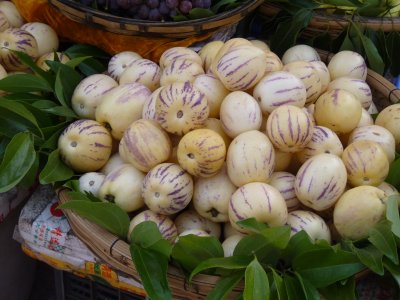
Another of those "haven't a clue what it is" things.
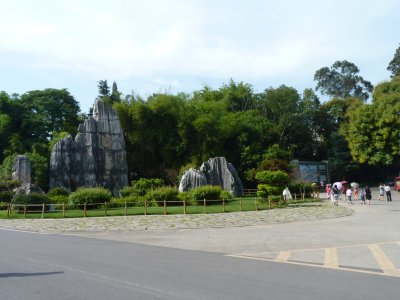
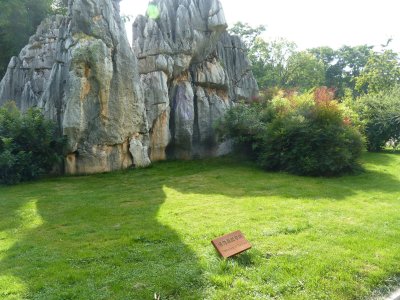
Only a minor improvement on the more demanding "Keep of the Grass" notices the English are so fond of making fun of.
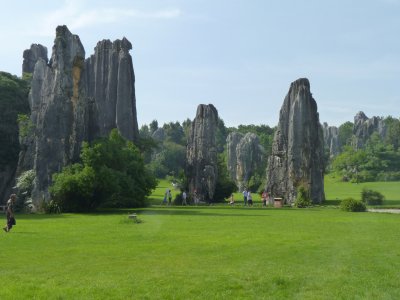
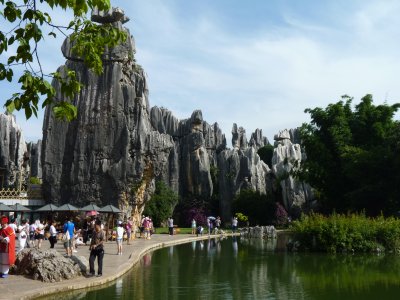
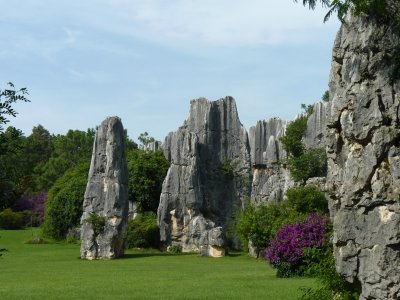
Lots of small skeletons and shells deposited over many years.
At Shilin the bedding plains are horizontal. The horizontal breaks, where more erosion has occured, can be seen in these pinnacles and others later.
Horizontal bedding plains are critical for pinnacle erosion.
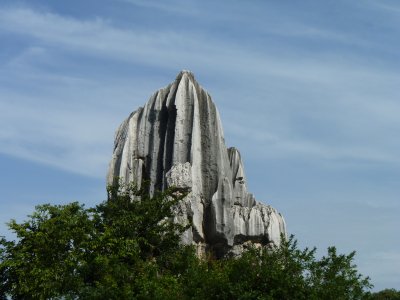
Water (from rain) has run down the pinnacles eroding the vertical ridges.
Between the pinnacles there were vertical weaknesses that were eroded first.
Having seen small limestone pavement areas Shilin presents as a very large one with the vertical faults quite wide apart.
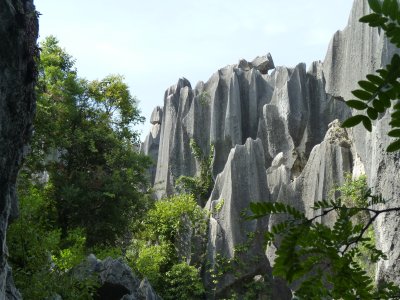
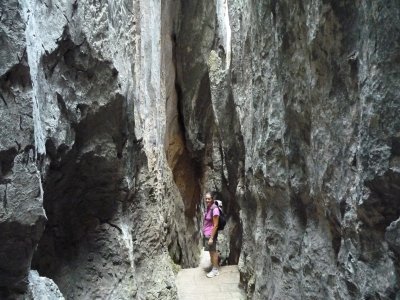
Very different erosion patterns.
It was a pleasant surprise to be able to get this deep into the chasms.
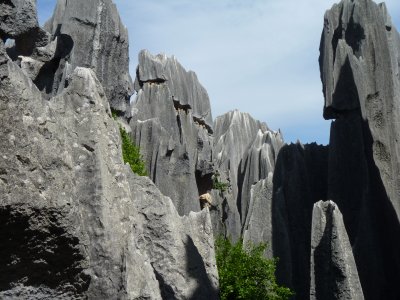
The shapes are fascinating.
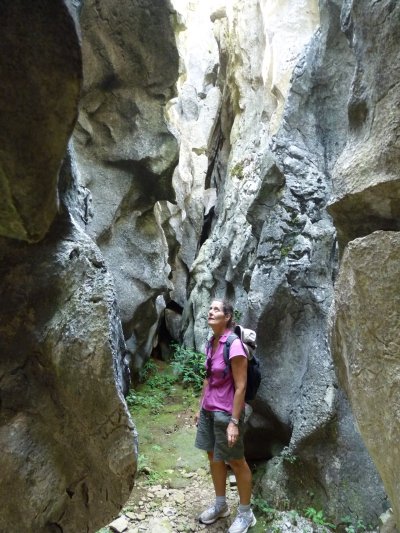
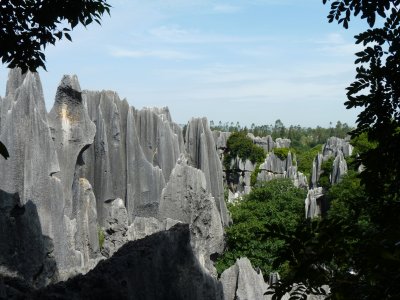
This is from an up.
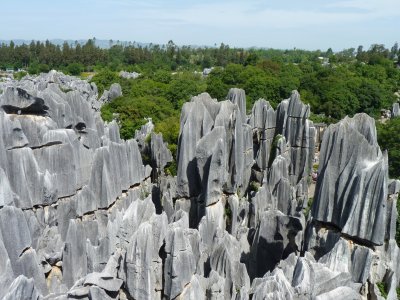
Some time after the limestone was formed it was covered with basalt.
The forest area is in a depression so water falling on the basalt would find its way through to erode the limestone.
The basalt has long since been eroded away. There is a small patch remaining but we didn't walk that far.
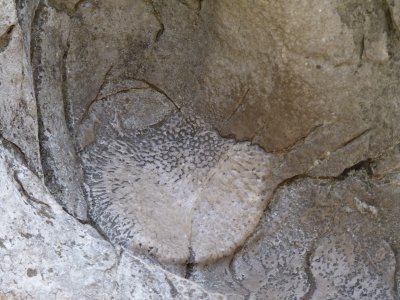
Probably about 270 million years old.
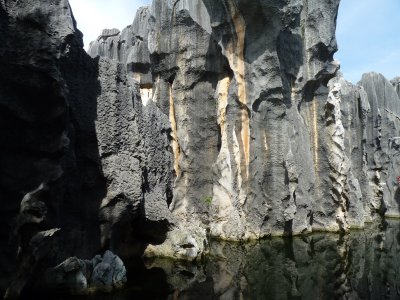
The whitish marks are a bit like the formation of stalagmites where water has dissolved limestone then evaporated so had to leave some limestone deposited.
Pure limestone is white. Impurities give it colour.
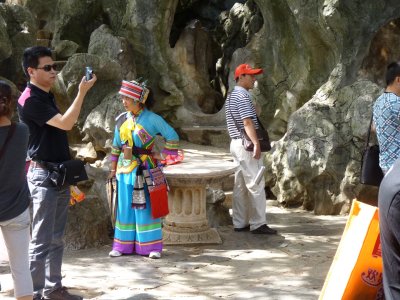
They were all smartly dressed. We think Yi is the dominant minority.
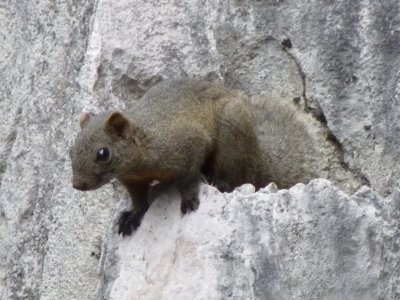
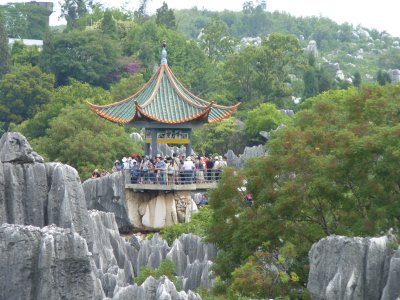
Too crowded, with photographers trying to make a living taking individual photographs.
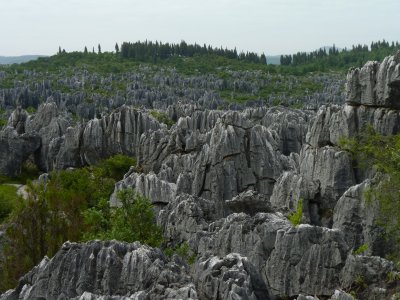
The periphery was deserted.
We also discovered there were much better descriptions of the geology in the periphery whereas the popular areas were more into the imagery.
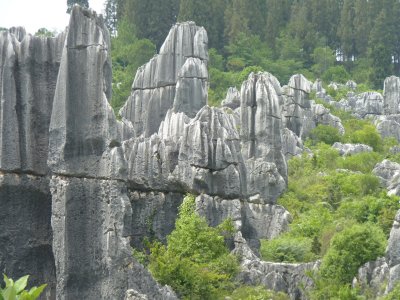
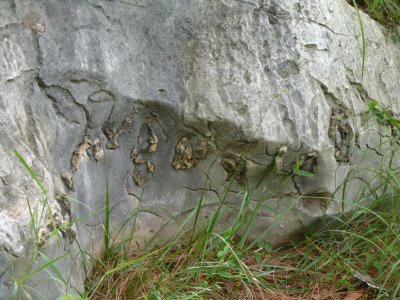
Dolomite is limestone (calcium carbonate) with magnesium (as calcium magnesium carbonate).
Dolomitisation occurs as magnesium is introduced into the rock by water. Either when initially formed, or later (as at Shilin).

We couldn't even hear voices.
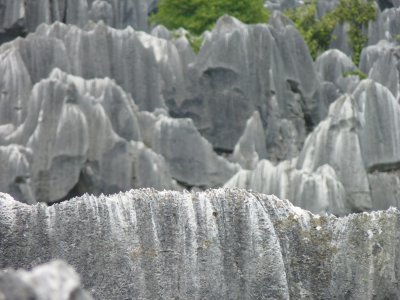

This is a long thin form of coral seen end on.
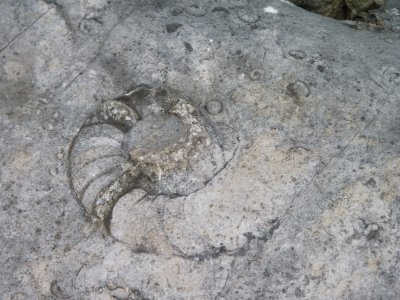
Had to do some research into the difference between an ammonite and a gastropod.
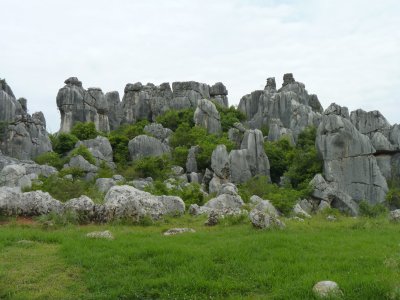
The lower part of the nearest formations are dolomitised.
We'd spent more than 4 hours walking the tracks and hadn't exhausted them.
We believe the formations of Shilin are unique.